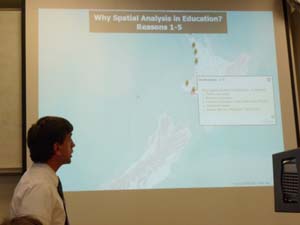Turn on suggestions
Auto-suggest helps you quickly narrow down your search results by suggesting possible matches as you type.
Cancel
- Home
- :
- All Communities
- :
- Industries
- :
- Education
- :
- Education Blog
- :
- Planning an Introduction to Spatial Thinking Cours...
Planning an Introduction to Spatial Thinking Course
Subscribe
390
0
06-28-2017 11:34 PM
- Subscribe to RSS Feed
- Mark as New
- Mark as Read
- Bookmark
- Subscribe
- Printer Friendly Page
06-28-2017
11:34 PM
A question that gets increasingly asked on listservs and forums these days is advice by those who are planning a course at their university that focuses on spatial thinking. These courses may be entitled “Introduction to Spatial Thinking” but there are numerous variations, depending on the goals of the university and hosting department. It is exciting to learn about these new courses and those who are planning them, because it shows that the message that we in the geospatial education community have been sharing for years is at last getting out beyond our own community. That message has consistently been that spatial thinking and spatial analysis are too valuable to be held by a single department, program, or school on campus, whether it is Geography, Natural Sciences, or anything else. Rather, spatial thinking and analysis, and the use of GIS technology and methods as an aid in teaching those concepts, are valuable to the student’s overall education, career skills, and to society. These concepts and skills therefore need to be embedded in all departments on campus as part of a rigorous and innovative 21st Century education. Such courses not only provide theoretical and practical background for GIS courses, but also for any discipline in which the “where” question is important—in business marketing, environmental design, wildlife biology, history, civil engineering, geology, epidemiology, geography, and beyond.

How should such a course be planned and built? Fortunately, some good models exist. For example, the course developed by the GeoTech Center provides a checklist vetted by numerous GIS education professionals on what might be included. Dr Bone at the University of Oregon is developing a freshman-level course entitled Our Digital Earth, which will provide hundreds of students annually with an appreciation of the ubiquity of geospatial data and technologies in their everyday lives, and how the geospatial revolution is shaping societies around the world. Dr Diana Stuart Sinton developed courses at the University of Redlands such as Foundations of Spatial Thinking. Other example courses can be found in the “case studies” section of the Esri EdCommunity and in the pages of Esri publications ArcWatch, Esri News for Education, and ArcNews. I will follow this post with my own thoughts about what might be included in such a course in future blog essays.
In the meantime, please share your thoughts: What would you include in a course on spatial thinking?
- Joseph Kerski, Esri Education Manager
You must be a registered user to add a comment. If you've already registered, sign in. Otherwise, register and sign in.
About the Author
I believe that spatial thinking can transform education and society through the application of Geographic Information Systems for instruction, research, administration, and policy.
I hold 3 degrees in Geography, have served at NOAA, the US Census Bureau, and USGS as a cartographer and geographer, and teach a variety of F2F (Face to Face) (including T3G) and online courses. I have authored a variety of books and textbooks about the environment, STEM, GIS, and education. These include "Interpreting Our World", "Essentials of the Environment", "Tribal GIS", "The GIS Guide to Public Domain Data", "International Perspectives on Teaching and Learning with GIS In Secondary Education", "Spatial Mathematics" and others. I write for 2 blogs, 2 monthly podcasts, and a variety of journals, and have created over 6,500 videos on my Our Earth YouTube channel.
Yet, as time passes, the more I realize my own limitations and that this is a lifelong learning endeavor: Thus I actively seek mentors and collaborators.
Labels
-
Administration
63 -
Announcements
67 -
Career & Tech Ed
1 -
Curriculum-Learning Resources
232 -
Education Facilities
24 -
Events
60 -
GeoInquiries
1 -
Higher Education
564 -
Informal Education
273 -
Licensing Best Practices
73 -
National Geographic MapMaker
27 -
Pedagogy and Education Theory
208 -
Schools (K - 12)
282 -
Schools (K-12)
239 -
Spatial data
29 -
STEM
3 -
Students - Higher Education
240 -
Students - K-12 Schools
116 -
Success Stories
33 -
TeacherDesk
1 -
Tech Tips
100
- « Previous
- Next »